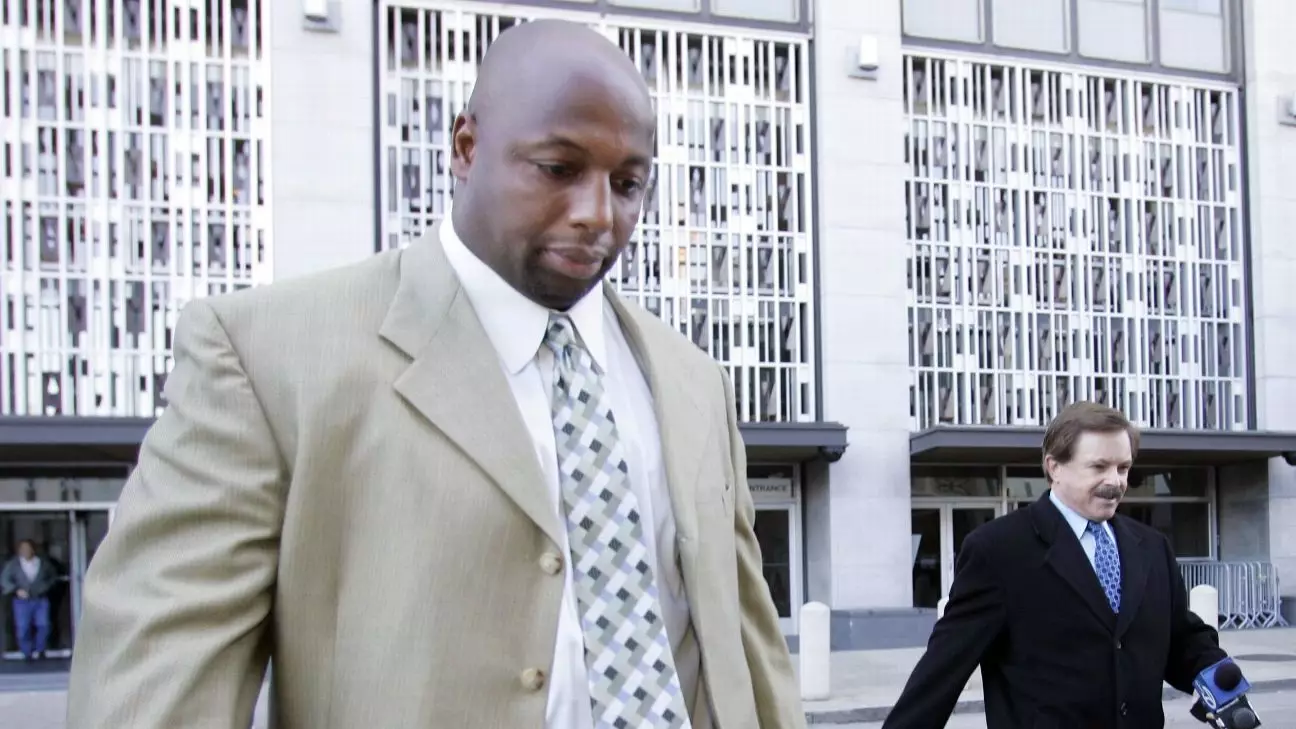In a case that has captivated and divided public opinion, Dana Stubblefield, a prominent former NFL player, continues to navigate the murky waters of the justice system following the vacating of his 2020 rape conviction. While the Sixth District Court of Appeal ruled that racial bias tainted his trial, leaving the former 49ers star awaiting a decision from the lower courts, the situation raises critical questions about fairness, racial justice, and the legal intricacies involved.
Stubblefield was initially convicted in 2020 of raping a woman who was described as developmentally disabled, an incident that prosecutors claimed involved deception on Stubblefield’s part, as he allegedly convinced her to come to his house under the pretense of offering a babysitting job. His sentence of 15 years to life was seen by many as a harsh penalty, especially considering the fantastical elements that often accompany allegations in high-profile cases. His defense team argued that no crime occurred, asserting that the sexual encounter was consensual and transactional in nature.
In December 2024, however, the tides began to shift. The appellate court’s decision to vacate the conviction hinged on findings that prosecutors had violated the California Racial Justice Act of 2020, which prohibits racial bias in criminal proceedings. The court cited the use of “racially discriminatory language” during the trial, suggesting that such bias not only influenced the jury’s perception but also undermined the integrity of the trial itself. This ruling reflects ongoing national discussions about systemic racism within the judicial system and the disproportionate impact this has on Black defendants.
Despite his conviction being vacated, Stubblefield remains incarcerated as of the latest court ruling. Santa Clara County Superior Court Judge Hector Ramon declined to grant bail, indicating that the appellate court’s remittitur—a formal order returning jurisdiction to the lower courts—has yet to be issued. This procedural formality has drawn the ire of Stubblefield’s legal team, who argue for his immediate release based on the fact that there is no longer a conviction against him.
Attorney Ken Rosenfeld, representing Stubblefield, emphasized the absurdity of a legally innocent man remaining behind bars due to bureaucratic delays. Their plea to the judge included an argument for Stubblefield to be moved from the state prison, where he has served nearly four years, to the local county jail before being released on bail. This course of action would effectively rectify his status to that of a defendant awaiting trial, rather than a convicted felon. However, prosecutors remain steadfast in their support for Stubblefield’s continued detainment, arguing that the complex nature of appeals requires caution.
This case is emblematic of larger societal issues surrounding race, justice, and the complexities inherent in the legal system. The fallout from Stubblefield’s conviction has not merely remained within the confines of a single trial; it resonates with broader discussions about how race influences judicial outcomes. With the growing spotlight on racial disparity in legal proceedings, this case adds fuel to the fire of the ongoing debate about the efficacy and fairness of the criminal justice system.
Moreover, the lengthy and often convoluted process of appeals raises questions about the very nature of justice. For Stubblefield, the emotional and psychological toll of being incarcerated for a crime he claims he did not commit is immense. The idea of “innocent until proven guilty” falters when the ramifications of a conviction can linger long after a ruling is vacated.
As the legal saga continues, the focus will remain on the appellate court’s timeline for issuing its remittitur. If Stubblefield’s conviction remains overturned, the implications could shift the narrative surrounding his case, highlighting the necessity for an overhaul of how systemic bias is addressed in court. The broader implications for justice reform remain to be seen, but Dana Stubblefield’s story serves as a poignant reminder of the human lives affected by judicial proceedings and the pressing need for a more equitable system.
Ultimately, this case stands at the intersection of sports fame and the realities of racial injustice, compelling us to critically examine not just the story of one man, but the foundational principles of our legal framework.

